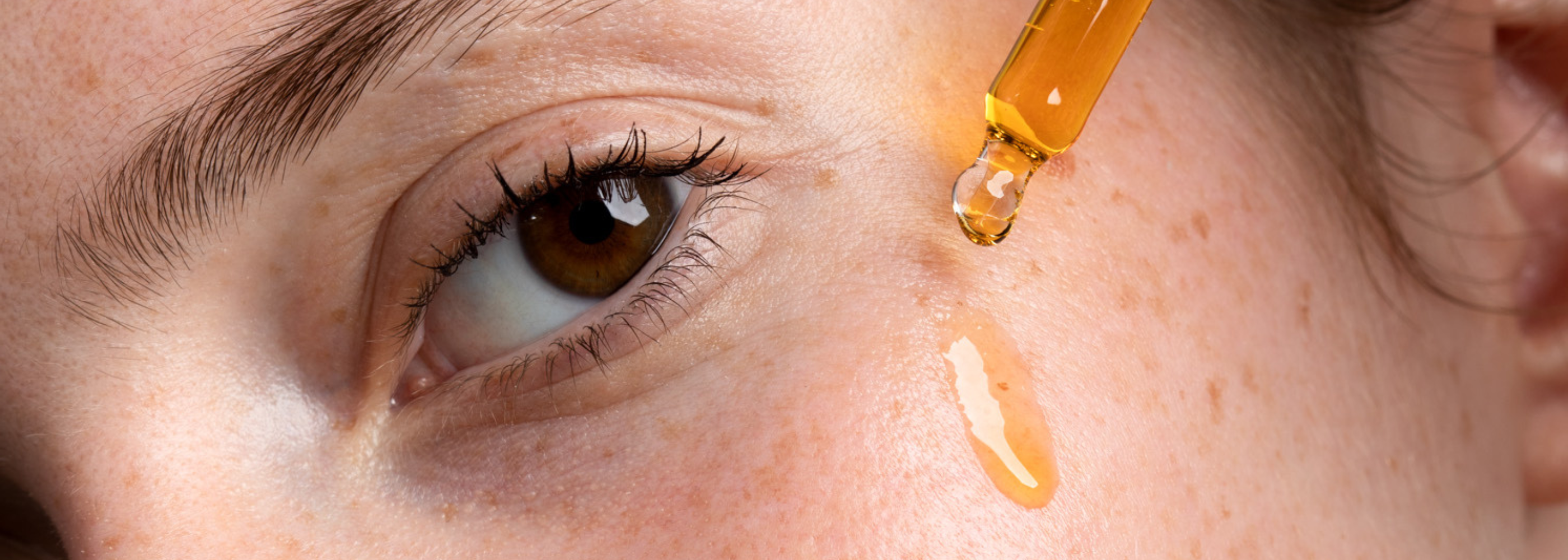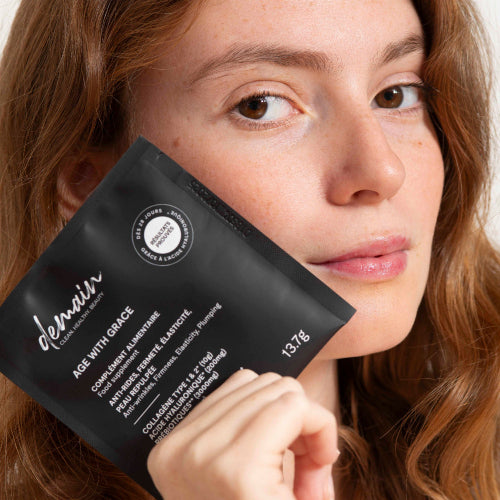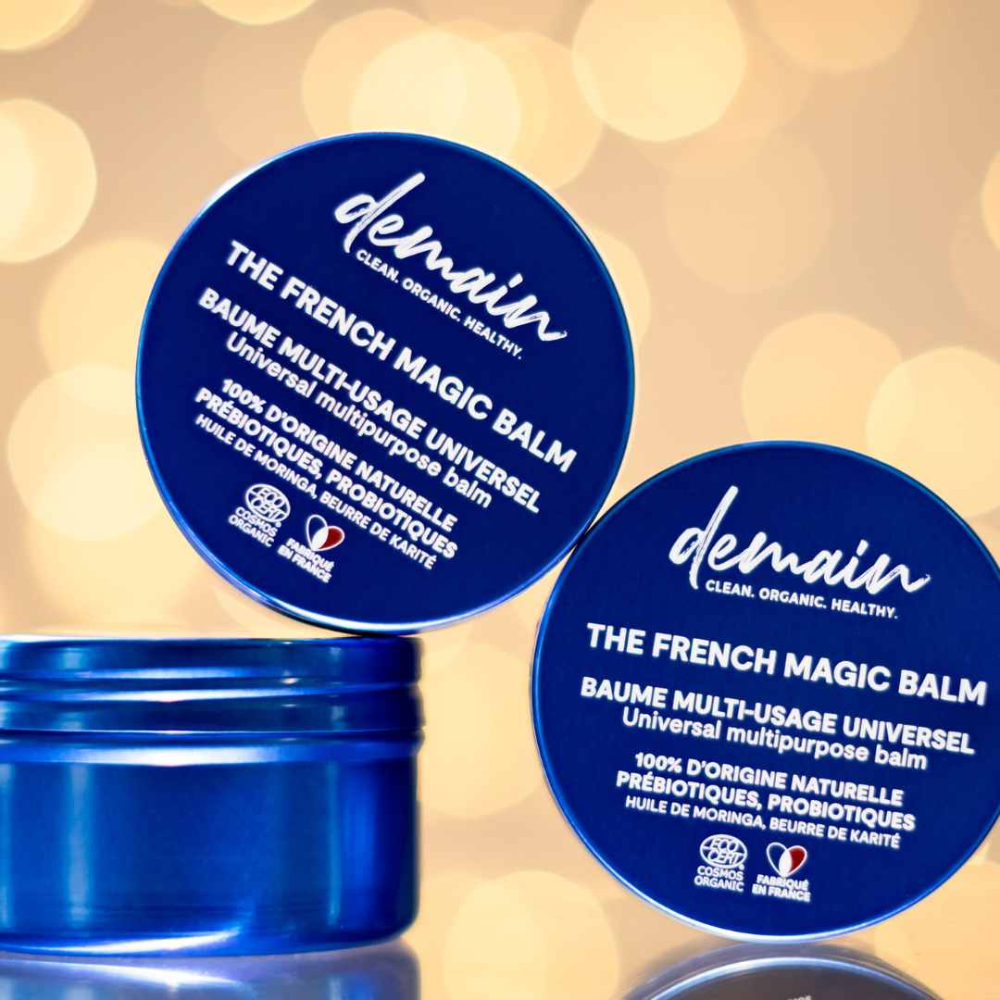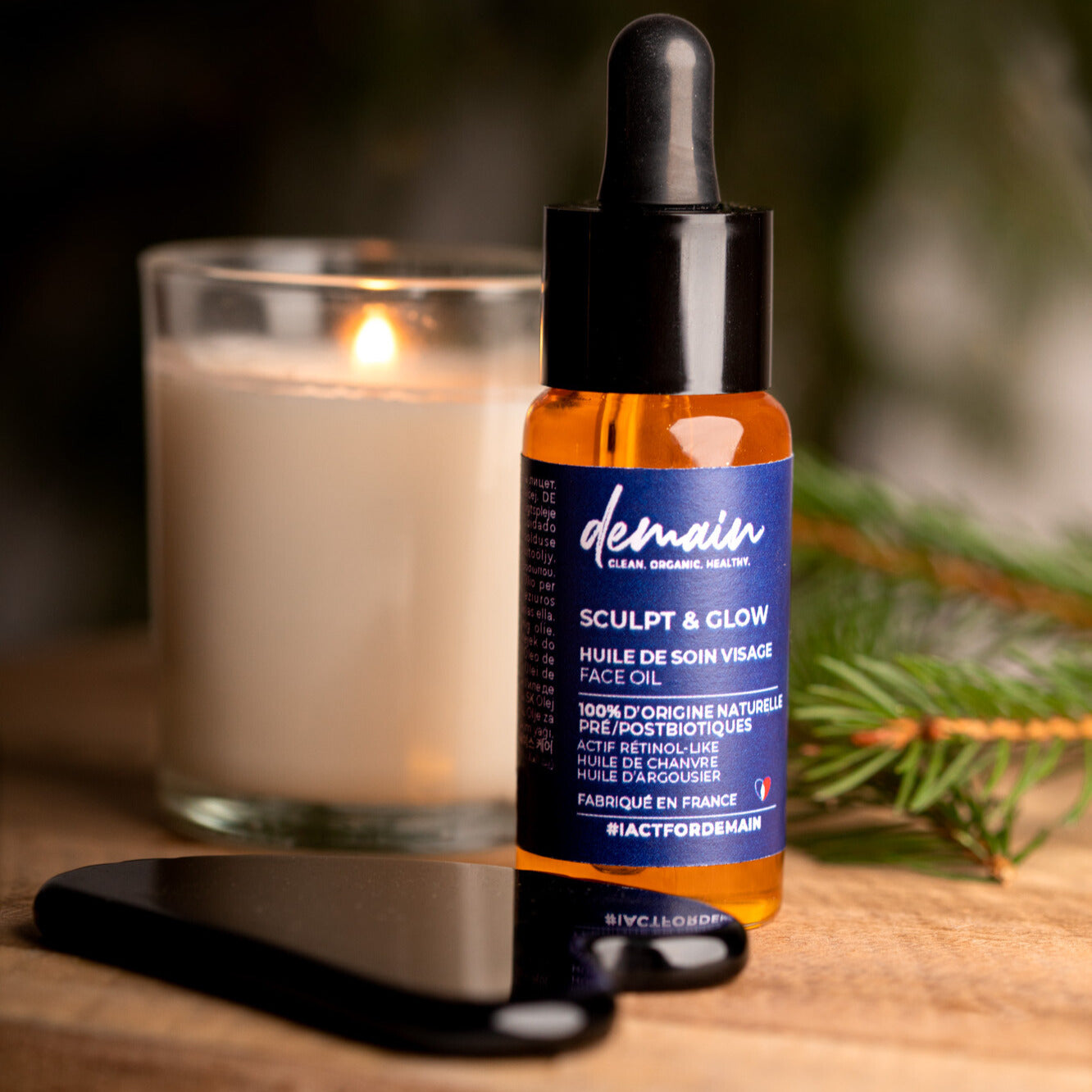The skin microbiota is all the microorganisms living on the skin. It is made up of billions of bacteria, viruses, fungi and parasites invisible to the naked eye, which live in perfect harmony!
Also called cutaneous flora, the cutaneous microbiota forms an essential protective barrier to protect the skin from daily aggressions and prevent skin aging.
Within the organism itself, we have more microorganisms than genes and chromosomes. A true ecosystem in its own right, the skin microbiota is essential to protect the skin and the body from external aggressions and bad bacteria.
THE ORIGIN OF THE MICROBIOTA
The microorganisms that form the skin microbiota develop from birth:
- During vaginal birth, the skin microbiota is formed from the mother's vaginal microbiota.
- During a vaginal delivery, it is the cutaneous exchanges between the mother and the newborn that will influence its microbiota.

However, certain physiological changes alter the environment of the skin affecting the microbial balance.
THE DISTRIBUTION OF THE CUTANEOUS MICROBIOTA IN AREAS OF THE BODY
On the skin, there are 3 skin microenvironments: oily areas (face, upper torso and back), moist areas (armpits, elbow and knee crease) and dry areas (fore- arms and palms).
Each of these areas harbors a specific microbiota adapted to its environment. There are also variations due to the depth and layer of the skin.
In other words, the deeper one penetrates into the dermis, the less microorganisms one finds.
Moreover, although the skin microbiota is unique to everyone, the microorganisms present in depth are similar from one person to another.
WHAT IS THE LINK BETWEEN SKIN MICROBIOTA AND SKIN HEALTH?
The microbiota, whether cutaneous, intestinal or vaginal, is specific to each individual. It varies quantitatively and qualitatively from person to person.
The micro-organisms present on the skin are like a protective barrier. They gather on the surface of the epidermis to protect the skin and the body from external attacks and the invasion of pathogenic agents.
WHAT IS A PATHOGEN?
By definition, a pathogen is “an organism capable of causing disease”. Unlike good bacteria, a pathogen damages organs, secretes toxins and multiplies in cells, causing inflammation.
THE ROLE OF THE SKIN MICROBIOTA IN THE PROTECTION OF THE SKIN AND THE BODY
Pathogens generally enter the body via the epidermis. This is where the skin microbiota comes into play by forming a triple protective barrier.
1. It protects the internal organs from the external environment. Epidermal cells can synthesize antibacterial toxins.
2. Thanks to the acidity of its PH (included in 4.7 and 7), the skin is a hostile environment for many micro-organisms. Indeed, the skin is naturally rich in salt and acid molecules, which is not conducive to the proliferation of certain bacteria.
3. Finally, thanks to defensive cells, the skin microbiota prevents the spread of pathogens and soothes inflammation.
The cutaneous microbiota is therefore essential to protect the skin and the body. It continually renews itself. It is therefore important to take care of it so that it can best perform its function as a protective barrier.
WHAT ARE THE RISKS OF A SKIN MICROBIOTA IMBALANCE?
As mentioned above, the composition of the skin microbiota is specific to each individual. Its composition depends mainly on sex, age, the state of the immune system and the living environment of each person.
Many factors such as stress, pollution, taking medication, poor diet and/or hygiene problems can upset the balance of the microbiota.
HOW ?
Bacteria that had hitherto had beneficial effects on the body, turn against it and become pathogens.
Skin problems can occur: this is called dysbiosis.
Dysbiosis is the result of a significant imbalance in the skin microbiota. It is associated with various pathological skin disorders and is the cause of several skin diseases such as acne, psoriasis, atopic dermatitis and hidradenitis suppurativa.
TAKE CARE OF YOUR SKIN MICROBIOTA DAILY
Every day, the skin is exposed to external aggressions: temperature variations, sun rays, conventional cosmetic products with harmful ingredients.
In order to limit the harmful effects of these aggressions on the state and resistance of the cutaneous microbiota, it is essential to use the right products.
For example, it is advisable to use soaps with a low pH.
Some bacteria proliferate more easily at a pH above 7. This is the case with the bacterium Staphylococcus Aureus , responsible for atopic dermatitis.
In addition, too high a pH attacks the hydrolipidic film and causes a feeling of tightness.
As for creams, deodorants and other cosmetic and hygiene products, give preference to natural products. Say goodbye to chemical and harmful ingredients that have a direct impact on the composition of the skin's microbiota.
Finally, it is best not to wash more than once a day and to dry the areas with folds (elbow, knee) which can retain moisture. Also remember to stay hydrated!
AND THE ENVIRONMENT IN ALL THIS?
Did you know that living in the city or the countryside will not have the same impact on the diversity of the skin microbiota? The latter is much more diversified among people who live in rural areas!
A significant exposure to a very varied quantity of micro-organisms makes it possible to reinforce cutaneous immunity. The cutaneous microbiota is then more resistant and makes it possible to better prevent skin diseases and the risk of allergies is reduced.
WHAT ACTIONS TO ADOPT?
To preserve the skin microbiota, there is no need to make it complicated.
Here are simple and effective gestures:
- Avoid touching your face.
- Protect yourself from UV and UVA rays which pass through the epidermis and cause irreparable damage to the dermis. Go For Protection Face Care , composed of biotechnology-derived active ingredients, protects the skin from pollution, UVA rays and blue light.
- Preserve the natural acidity of the skin thanks to cosmetic products with a neutral and/or low pH which protect it from harmful bacteria and help maintain its natural protective barrier. All our products have a pH between 4 and 4.5.
TAKING PROBIOTICS AND PREBIOTICS FOR PREVENTION OR DURING MICROBIOTA IMBALANCE
A probiotic is a microorganism capable of rebalancing an ecosystem.
Therefore, it exerts a positive effect on health.
Think of it as a concentrate of good bacteria that allows a beneficial bacterial ecosystem for the skin to develop.
The use of certain probiotics is effective in treating inflammatory skin diseases.
A prebiotic is an ingredient that selectively stimulates the growth or activity of certain bacteria. They do not act in the same way on all bacteria.











